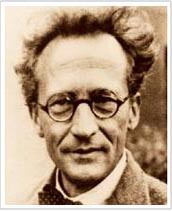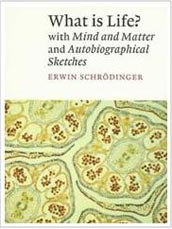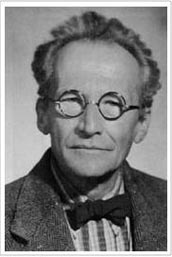Erwin Schrödinger
Erwin Schrödinger (1887-1961) was an Austrian physicist and Nobel laureate (1933) who developed the theory of wave mechanics, now recognized as one of the fundamental branches of quantum mechanics.
The basic equation of this field is now known as the Schrödinger equation. One of this papers on quantum mechanics, loosely tranlated as 'Quantization as an eigenvalue problem' (Quantisierung als Eigenwertproblem), is now now considered to be one of the most important papers in the physical sciences.
Quantum mechanics seeks to explain the universe at the microscopic level where behaviour is, to say the least, counter-intuitive. Schrödinger, through his theory of wave mechanics, was often very critical of the pervailing theory, known then (and now) as the Copenhagen interpretation.
He most famously did this through the paradox of Schrödinger's cat.
Briefly, consider a cat is in a room with a single radioactive atom, such that if the atom decays a cyanide capsule is released and the cat dies.
As there is no way of predicting when a radioactive atom will decay, the following question may be asked: can we predict if the cat is dead or alive, and can we know for certain without opening the door?
The Copenhagen interpretation of quantum mechanics holds the (counter-intuitive) view that the cat is half-dead and half-alive until the door is opened, when the cat takes up either one of two states (dead or alive).
Schrödinger took the view that the cat is always either dead or alive, but we cannot know until the door is opened.
What is Life?
Although better known as a physicist, Schrödinger wrote a book that had a seminal influence on the the biological sciences
This book, of course, is What is Life? where Schrödinger addresses the (then) fundamental problem of the molecular basis of the gene. He introduced the concept of the aperiodic crystal, which we now consider to be equivalent to DNA.
What is Life? had a profound influence on both James Watson and Francis Crick, who would later propose their famous double-helical structure for DNA.
The book was written when Schrödinger was working at the Dublin Institute for Advanced Studies, and arose out of a series of public lectures he delivered at Trinity College Dublin in 1943.
At that time it was not not accepted that DNA was the carrier of the genetic material (the pervailing view was that proteins, not nucleic acids, held the key to heredity), nor was there any plausible theory for the molecular basis of the gene.
What is Life? is still considered a classic text, and it holds a key place in the development of thought in the biological sciences.
The Irish Connection
Because of Schrödinger's opposition to Nazism he was required to leave Germany in 1933.
After spells in Oxford and Princeton, he returned to his native Vienna as university lecturer. However, he was suddenly dismissed from this post in 1939 for 'political unreliability'.
Fearing for his life, he and his wife went to Rome by train, and sought the help of the Vatican.
In Rome, he took a phone call from de Valera who invited him to Dublin to establish the Dublin Institute for Advanced Studies (which was to be modelled on the Princeton Institute of Advanced Studies).
He immediately accepted the offer. The Irish consule in Rome arranged the necessary visas, and gave him and his wife one pound each to help with travelling expenses.
They arrived in Dublin in 1940, living in Clontarf, and the Institute was founded with Schrödinger as director.
The fact that Schrödinger lived with both his wife and his mistress, which had previously caused problems in both Oxford and Princeton, posed no difficulties for de Valera.
He told Schrödinger to write to him personally about the extra visa, and Hilde (Schrödinger's mistress) also came to Ireland, living with both Schrödinger and his wife.
Schrödinger remained in Dublin until retirement in 1957. He then returned to Vienna where six years later he died of tuberculosis, aged 73.


